Continuous perioperative heart rate variability monitoring in video-assisted thoracoscopic surgery lobectomy-a pilot study
- PMID: 37243951
- PMCID: PMC10372135
- DOI: 10.1007/s10877-023-01016-2
Continuous perioperative heart rate variability monitoring in video-assisted thoracoscopic surgery lobectomy-a pilot study
Abstract
Heart rate variability (HRV) is a measure of cardiac autonomic modulation and is potentially related to hypotension, postoperative atrial fibrillation, and orthostatic intolerance. However, there is a lack of knowledge on which specific time points and indices to measure. To improve future study design, there is a need for procedure-specific studies in an enhanced recovery after surgery (ERAS) video-assisted thoracic surgery (VATS) lobectomy setting, and for continuous measurement of perioperative HRV. HRV was measured continuously from 2 days before until 9 days after VATS lobectomy in 28 patients. After VATS lobectomy, with median length of stay = 4 days, the standard deviation between normal-to-normal beats and the total power of HRV were reduced for 8 days during the night and day times, while low-to-high frequency variation and detrended fluctuation analysis were stable. This is the first detailed study to show that HRV measures of total variability were reduced following ERAS VATS lobectomy, while other measures were more stable. Further, preoperative HRV measures showed circadian variation. The patch was well tolerated among participants, but actions should be taken to ensure proper mounting of the measuring device. These results demonstrate a valid design platform for future HRV studies in relation to postoperative outcomes.
Keywords: Enhanced recovery after surgery; Heart rate variability; Orthostatic intolerance; Postoperative atrial fibrillation; Surgical risk stratification; VATS.
© 2023. The Author(s).
Conflict of interest statement
René Horsleben Petersen: Speaker fee: Medtronoic, AMBU, Medela, AstraZeneca. Advisory board: AstraZeneca, Roche, MSD. The other authors have no competing interests to declare.
Figures
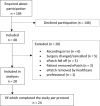
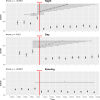
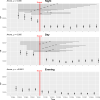
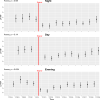
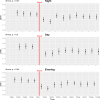

References
-
- Godoy M. Nonlinear analysis of heart rate variability: a comprehensive review: de Godoy MF et al. nonlinearity and heart rate variability. J Cardiol Ther. 2016;3:528–533. doi: 10.17554/j.issn.2309-6861.2016.03.101-4. - DOI
Publication types
MeSH terms
LinkOut - more resources
Full Text Sources
Medical

